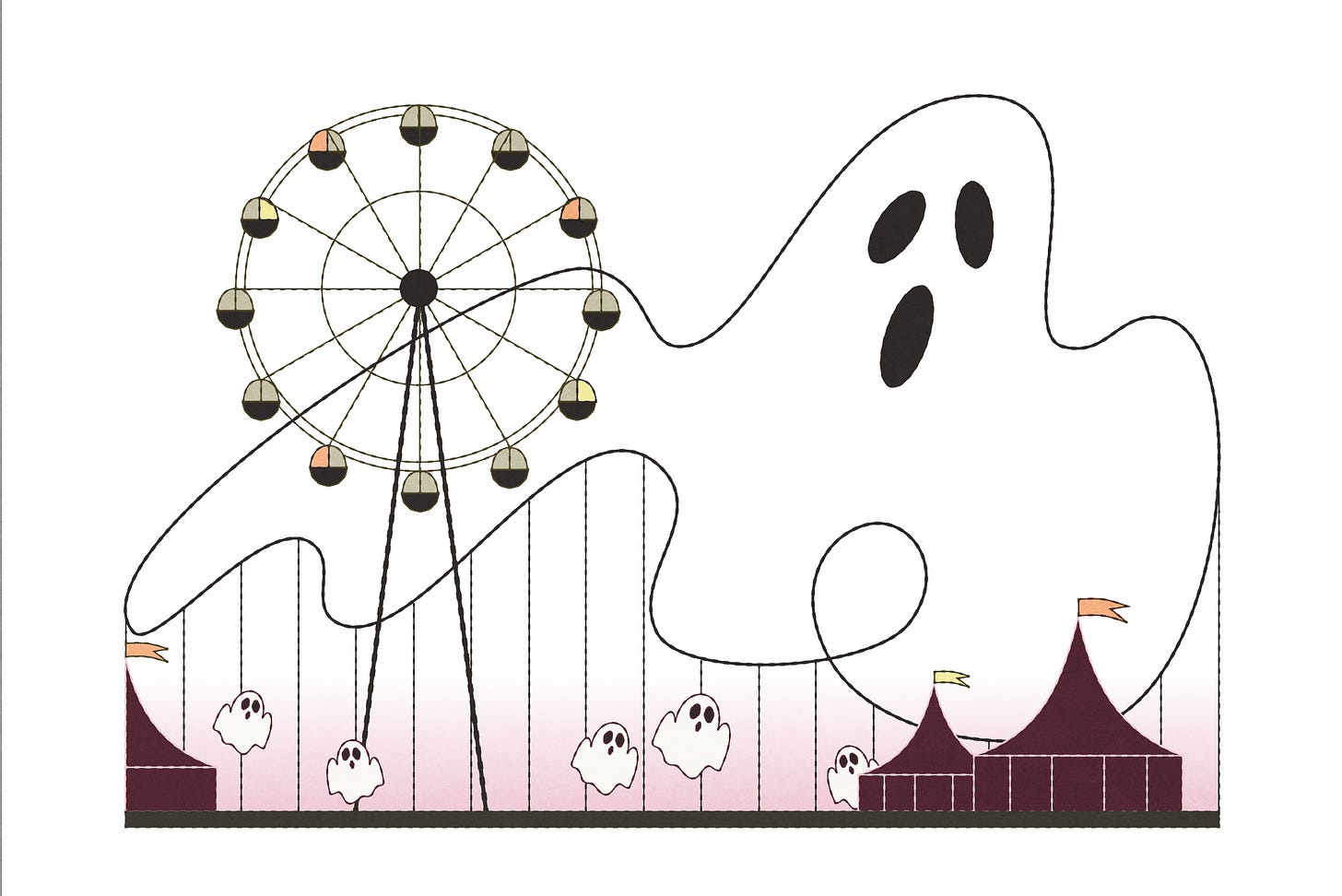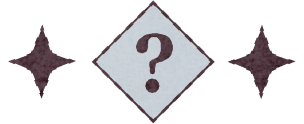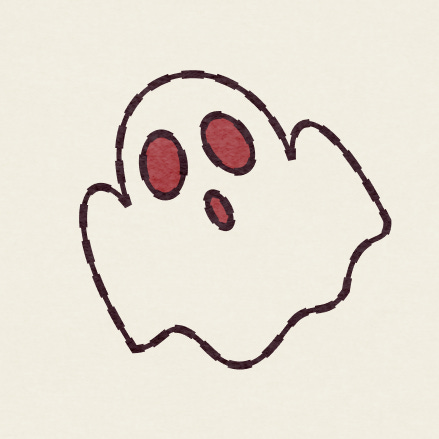This Will Change the Way You Write (Short) Horror Forever
Write a Freaky Flash Every Week in October with the Scary Story Sprint!

Four short stories that will have people like “damn, you wrote that? Also, you ok?”
Hi, Forever Workshoppers!
Welcome to The Freaky Flash Collection with Kayla Kumari Upadhyaya, where we will write four pieces of scary good flash fiction in just one month.
Each week, we’ll focus on a different craft tool we can wield to create bite-sized fiction that haunts, lingers, challenges, frightens, and more. Then we’ll put that tool to use through original prompts designed to really activate the creative juices.
And by the end of the month, you’ll have four freaky pieces of flash to submit to journals! (In our final workshop, there are some recommendations on places you can get started with that…)
Here’s what to expect from this Scary Story Sprint:
Develop a range of literary horror craft skills to apply to your flash fiction
Learn how to build immersive horror worlds and unsettling atmospheres
Play with sensory details and manipulate time to freaky effect
Borrow cinematic devices from classic horror films
And explore what makes effective eco-horror and take inspiration from the literal horrors around us
Using masterful examples and generative prompts, we’ll explore a range of tips and techniques to craft super short horror that will haunt your readers forever…
Join in if you dare!
Today’s lesson is free to all subscribers. Paid subs will get a new scary story exercise from Kayla every Wednesday in October 👻
A Quick Introduction
Hi, I’m Kayla Kumari Upadhyaya: an author, editor, and many hats wearer in the literary and publishing worlds.
My first book — Helen House, a queer horror novelette — was published by Burrow Press in 2022. And I’ve had literary horror short stories and flash pieces published at places like McSweeney’s Quarterly Concern, Catapult, Lit Hub, Joyland, The Rumpus, Cake Zine, The Offing, and Foglifter.
I’ve also been on the other side of the submission portal in many capacities, selecting standout fiction in editorial roles at various literary journals and as a former fellow for Tin House where I read hundreds of applications for residency and workshop cycles. I’m currently the managing editor at LGBTQ+ news and culture magazine Autostraddle, where I write and edit essays, reported features, and so much more by talented queer and trans writers.
I also love to teach, particularly in the realms of queer fiction and literary horror, and you’ll often see me popping up with course offerings at Write Or Die or as one of Tin House’s online craft intensive instructors. And here, at The Forever Workshop!
All that to say: I do indeed wear a lot of hats! And it makes me a useful resource for folks navigating the wild world of developing and submitting their writing — especially speculative short fiction and flash — so I hope you’ll join me over the next four weeks to write some scary stories together.
Have questions? I’m an open book, so drop them in the comments! And feel free to share your ideas and drafts as we work through the course — I’ll be checking in each week to reply to comments and give feedback along the way!
Ready? Let’s get started:
Welcome to the Wonderful World of Horror
First up, this workshop is not just for horror fans — it’s for anyone with an interest in writing compelling fiction! That’s right. You do not have to primarily have an interest in writing horror or speculative fiction in order to benefit from these lessons — I truly believe that.
The categories of “flash” and “horror” might seem super rigid and defined, but I actually think both are great mediums to work in for ANYONE looking to challenge themselves in their fiction writing. The specific parameters they set up encourage us to think and write in creative and expansive ways. And you’ll see that in action with all of the (super short!) readings we do to accompany each lesson.
Then you’ll get to try it yourself!
The core idea of this workshop is to create a lot of different pieces quickly, tapping into your subconscious and being playful and imaginative on the page. We’re writing flash! We’re writing horror! When working in these modes, sometimes it’s just about capturing a specific mood, feeling, image. It doesn’t have to be elaborately plotted or complicated.
And if you follow along, you should end up with four freaky flashes and a load of new techniques!
In this first horror flash lesson, we’re going to break down the craft of world-building on a super zoomed-in micro level to show how simple it can be. You don’t have to overthink it. (That’s probably going to be a sentiment I express a lot over the course of this workshop!)
So to begin, let’s look at some readings that do really great world-building in very small spaces (as in, literally, a small amount of text on the page). And as you’re reading, jot down any sentences, images, or other elements that stand out to you.
The Strangler’s Hotel by K.C. Mead-Brewer
“Zoe’s been running this place for years now, and she knows for a fact: there’s nothing sexier than a haunted house. It speaks to your every sense, even your quietest sixth one…” » read on »
Strip mall triptych by K-Ming Chang
“My whole family works the strip mall. My cousins at the laundromat, my aunt at the sex shop, me and my mom at the Dollar Tree, my grandmother at the water store…” » read on »
Questions to consider:
How do these stories both employ and subvert tropes about “haunted” places?
What makes these worlds memorable?
What provides the “scaffolding” for these worlds? Not in the sense of literal construction but what ideas, themes, and motifs are holding them up and giving them dimension and depth?
As you can see from these pieces, flash fiction is such a playful form to work in. You don’t have to stick to traditional conventions and structures of storytelling. You can really zoom in to a setting, emotion, or character’s headspace. There isn’t pressure to “resolve” everything.
What I also love about both of these stories is that they mix humor and the erotic with threads of horror and the surreal. Their settings are also multivalent, at times at odds with the story at hand but also inextricable from them. You get the sense that this particular story cannot be told in any other place. The world functions as a diorama in which to hold the characters and their lives but also almost as a character in and of itself. Great horror does that, and great place-writing across genres does, too.
Here’s a useful way to start building this kind of atmospheric immersion from the ground up:
Make a Rulebook for Your Fictional World
In horror, the world you create has rules. Those rules don’t all have to be explicitly articulated on the page. In fact, it’s better if they’re not. Give the reader just enough rules to understand the world but not so many as to suddenly make your presence as the creator of this world too known.
When working on longer works of horror or speculative fiction, I find it helpful to keep a separate document or journal that serves as the Rulebook. In the Rulebook, you can brainstorm the rules of your world, from the general (eg: vampires exist in this world) to the more granular (eg: the only ways to kill vampires are with sunlight, a stake to the heart, and decapitation). The Rulebook can be updated at any point in a project, and you can change things as you go if needed. I’m working on a novel set in a dystopian future where there are a lot of different moving parts I need to keep track of (including a ritualistic cannibal cult!) so my Rulebook gets updated a lot. I find I do not even need to reference it that often, but the simple act of writing the rules down helps me to hold them in my head.
The Rulebook is for YOU, not for the reader. Again, you do not need to overload the reader with too many rules or details about your world. Think of how the two flash pieces above are so richly detailed and textured without ever feeling dense or boring about it. You’re given just the right amount of information. But if you as the author are armed with even more information, you’re going to create worlds that are immersive and legible to the reader naturally. The reader doesn’t need to know why the teen cannibals in my novel plan their hunting schedule around the moon phases. But I do! And the writing will ultimately be better for that knowledge, even if it never makes it onto the page.
Now, let’s reverse-engineer a piece together by really going rules-forward with it!
The following prompt, in which we will be designing and building out a horror setting, is intended to demonstrate a very literal approach to rule-making for the purpose of (other)world-building so that you can eventually become more nuanced and flexible in your approach.
For those of you new to my teaching style, my writing exercises tend to be multi-step, and I recommend you do not read ahead or move on to the next step until you’ve completed the one before it.
I’d also recommend doing each week’s prompt twice (preferably on different days). You might unlock something different the second time, after your brain has had time to marinate in the readings and the conventions of the prompt. So try to forget about what you wrote the first time around and do it all over again from a different vantage!
Exercise: Welcome to the Wonderful World of ________
Step One:
Think of a favorite movie or show. It can be any genre.
Now, set a timer for 90 seconds and write down the first 7-10 nouns that come to mind when you think of that movie or show. Write them as plural. (They can include an adjective/descriptor preceding the noun or be compound nouns, so don’t have to be one word.)
For example, for the show Yellowjackets, I might write down:
Teen girls
Teammates
Soccer balls
Cannibals
Feral screams
Plane crashes
Severed ears
Traumas
Step Two:
You are now the evil genius behind a theme/amusement park called THE WONDERFUL WORLD OF ________.
Fill in the blank with one of the things you listed in Step One. So for example, mine might be called THE WONDERFUL WORLD OF FERAL SCREAMS.
You’re going to write the rules for this world. Imagine a giant sign at the entrance to your world that lists the rules. Write them down in literal list form. They can be as general or as granular as you want.
They can be mundane/real world (eg: “Littering is forbidden in the Wonderful World of Feral Screams”) or surreal/speculative (eg: “In the Wonderful World of Feral Screams, all screams must be authentic. False screams will lead to immediate removal from the park”).
For the purposes of this prompt, having a mix of mundane and surreal will be the most fun. Think back to the readings we did and how they mix mundane and familiar elements (like a strip mall) with more surreal ones (a ghost in said strip mall).
Write your list of rules. There should be about 10-15.
Step Three:
Write a piece of flash fiction set in your newly created horror setting. There should be something wrong or disturbing or strange about your amusement park, whether that’s a literal haunting or something else.
The piece should begin like this:
Welcome to the Wonderful World of [INSERT NAME OF YOUR PARK]!
Start writing from there, from the perspective of someone who works for the park and is giving a tour of it to a guest. Then try to organically work some of the rules you generated in Step Two into the story.
Set a timer for 15 minutes and just write freely — treat this as a generative session. I’m a big believer in your subconscious being a great place to write from, especially when it comes to horror (and flash)!
Freaky Flash Revision Tips
To get the best out of this Scary Story Sprint, try to designate some days for generation, some for taking a break from the work (important!), and some for transformative revision, which is how I personally like to think of revision — not a process of refinement but of transformation. It should feel like a living draft; something that you’ve not only created but also really given your creative energy to.
Here are a few revision techniques to help develop your story into a submission-ready piece:
Let your draft/s rest for at least a day before revisiting. You can think about it, but don’t actively work on it just yet.
If you wrote several responses to the prompt, are there places where they touch in surprising ways? Can you merge elements between them? Or, does one simply feel stronger than the other?
Either work to merge two pieces or choose one to continue writing. Spend a little time developing the piece and getting it into a first draft state. Take what’s already working and see if you can push it into stranger places!
When revising, think again of your rules. Make one of your characters break a rule. What happens?
Try playing around with perspective. You initially wrote from the perspective of a park employee, but is the story ultimately better told from the perspective of a guest? An ex-employee? A ghost?
Make sure you’re fleshing out your world-building with scaffolding beyond physical descriptions of the space. What other stories does this world hold?
Remember: when it comes to flash, revision can still look a lot like generation! Maybe you want to play around with tense, structure, or some other big picture narrative element of the piece because something isn’t quite working just yet. Approach revision from a place of curiosity. See what you unlock.
Finally, what did you unlock in revision? What does the piece need to get it over the finish line? If you feel stuck, go back to the readings and the notes you took about them. How can you harness the same tools those writers used in your own work?
And when you’re done writing and revising:
👻 Share your freaky flash below! 👻
Post your scary stories, ideas, thoughts and questions in the comments and I’ll be checking in throughout the week with replies and feedback!
Taking Your Horror Rulebook Out into the World
By applying this super literal and to-the-point approach to rule-making for the sake of world-building, you get to see just how simple world-building can really be. And you can apply all these same approaches to any kind of fiction writing, including longer pieces.
So if you’re ever feeling like you haven’t quite figured out the world of your story, pause to write the rules for it. Think of this exercise and replicate it in a way that makes sense for whatever you’re working on. You’d be surprised how well it works!
Because sometimes writing in these campy and over-the-top styles that work in flash and horror can really teach us tools we can then use for more nuanced, longer work.
But for now it’s time to wrap up this story, because guess what? The whole cycle begins again next week with a brand new set of tools and prompts!
Next Week in the Scary Story Sprint:
As you can probably tell from my insertion of Yellowjackets into the prompt above, I love thinking about the things we can pull and learn from horror film and television when writing compelling literary horror.
In the next edition of The Freaky Flash Collection, we’ll be looking at cinematic techniques for using SOUND to amplify horror, create atmosphere, and direct the audience’s attention — and how we can do the exact same thing on the page.
Paid subscribers will receive a brand new spoooooopy workshop every Wednesday in October, so sign up to join in with The Scary Story Sprint!







I also went with Yellowjackets since thst's what I've been watching, and the only word we had in common was trauma... But that's the one I ended up going with for the exercise! I think it's feeling more like a hotel than an amusement park though...
This was so much fun! I've never done an exercise like this before. I've already written my first piece, and I'll let it sit for a day before coming back to it. It's called "Welcome to the Wonderful World of Neck Bites". When thinking of a show I liked, I couldn't help but think of The Vampire Diaries.